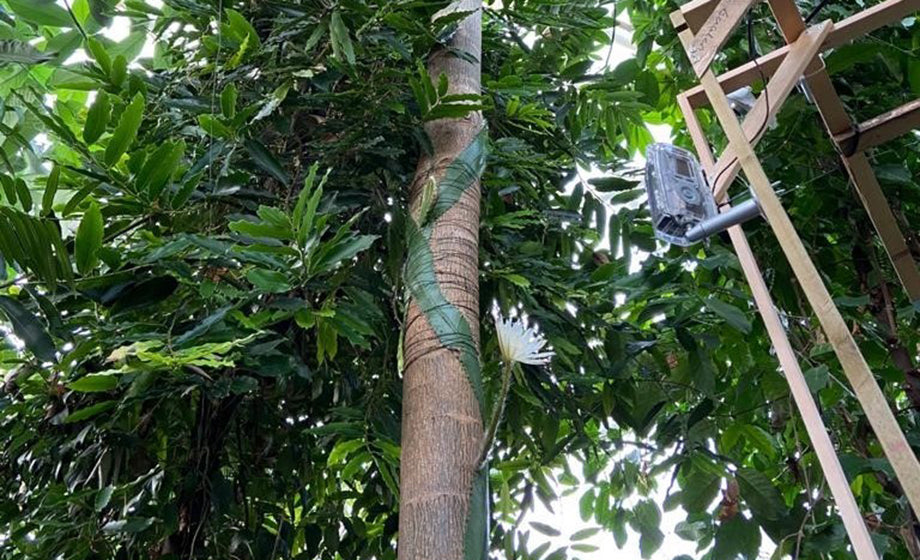世界中の研究者の間で、植物の知覚に関するそれぞれの理論を証明しようとする一種の対決が繰り広げられています。Scientific Reportsに最近掲載された記事は、知覚チームに新たな視点を与え、タイムラプスを使った新しい研究方法の計画に役立っています。
植物の知覚力を証明するために、研究者らは成長中の豆の茎の章動運動に注目した。章動運動とは、物体が回転軸を中心に揺れ動く動きであり、この動きは、つかむための支柱がある状態で成長している豆と、支柱がない状態で成長している豆の 2 つの状況で調べられた。
彼らの研究の素晴らしい点は、植物研究に対する共同かつ学際的なアプローチだったことです。哲学、心理学、植物科学の学者と、米国、カナダ、スペイン、イランの最小限の諜報機関が協力してこの研究を発表しました。

実験映像 支柱のない環境で豆が育つ様子。
私たちは、このプロジェクトの2人の研究者、カナダのウエスタン大学ロットマン哲学研究所のビセンテ・ラジャ氏と、スペインのムルシア大学で最小知能研究所(MINTラボ)を運営するパコ・カルボ氏と話す機会に恵まれました。
植物の知覚力について疑問を抱くことができる段階に私たちがいるのは素晴らしいことだと思います。答えはよく分かりませんが、疑問を抱くことができるのはとても素晴らしいことです。
-ビセンテ・ラジャ
ビセンテはスペインのムルシア大学の学部生だったときにパコと出会い、パコは彼の修士課程の指導教官になりました。彼が植物の行動と知性という概念に触れたのはこの頃でした。シンシナティに移った後、ビセンテは動物の行動の研究にのみ使用されていた新しい概念とツールのセットを習得しました。動物科学と植物科学のギャップを埋めるために、2 人の研究者はこれらのツールを植物の研究に適用することにしました。
パコは MINT ラボの主任研究員であり、植物のナビゲーション能力を観察するためのタイムラプス撮影などの実験的手法を使用して植物の知能を研究しています。
90 年代後半に、私は人間はそれほど特別な存在ではなく、知性と感覚は生命の樹の根源にまで遡るべきであることに気づきました。
-パコ・カルボ
パコ氏は、タイムラプス写真を使用することで、人間は植物に共感し、植物を消費する資源としてではなく、主体として見ることができるようになると説明しました。植物の行動と成長はゆっくりとしたペースで進むため、タイムラプスの助けがなければ、私たちは簡単に「植物盲」になり、周囲のダイナミックな緑の世界を理解できなくなります。

MINT の環境制御チャンバーには、Brinno TLC200 PRO タイム ラプス カメラが装備されています。パブロフの犬の実験と同様に、植物における連合学習の可能性を調査しています。
ビセンテ氏とパコ氏は、自分たちの研究によって、植物が生態系内でどのように相互作用するかについての理解が深まり、持続可能性や気候変動などの問題に対処するためのより良い枠組みが開発されることを期待しています。
私たちはこの絶えず進化する研究から間違いなく目を離さないでしょう。また、パコは植物の知覚に関する本を出版する予定だと教えてくれました。 プランタサピエンス そこには私たちを驚かせる新たな発見も含まれるでしょう!
ブリノはこの革新的な研究に参加できることを誇りに思っています。詳細については、 TLC200ProやBrinnoタイムラプスカメラが研究プロジェクトに不可欠な要素となる方法をご覧ください。 研究アプリケーションソリューションページ。



